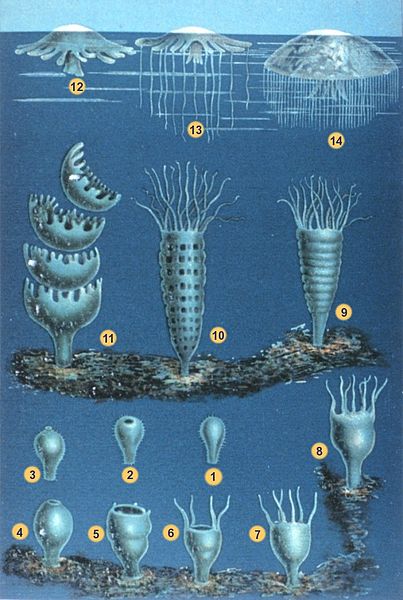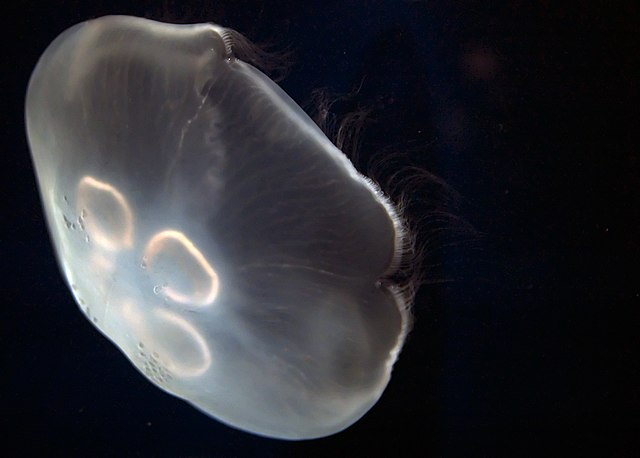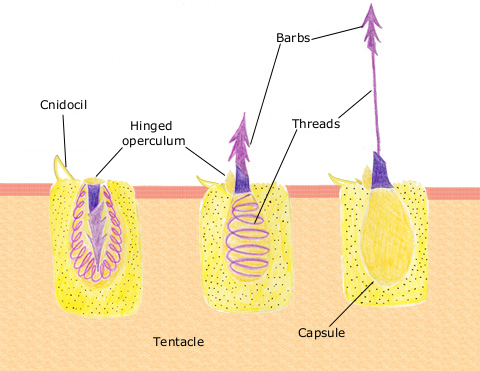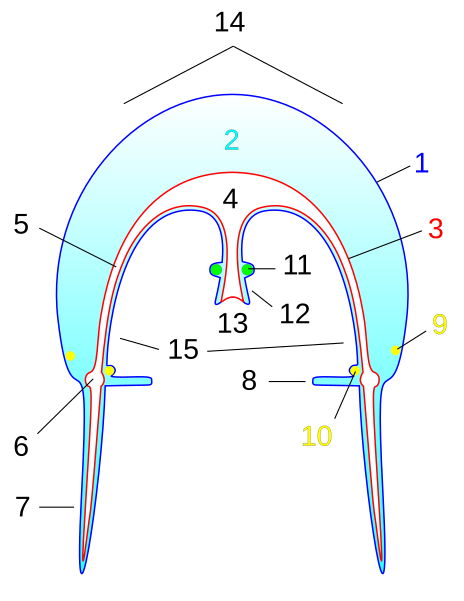We just learned about the Jellyfish Polyps.
Another part of a jellyfish is the Ephyra.
After the polyps grow for a little while, they start to grow parts that look more like a jellyfish.
It starts to get a bell shape, grow some tentacles and even mouth parts.
Eventually it floats away and is like a mini-jellyfish, not quite grown yet.
This part of the jellyfish's life is known as the Ephyra.
Later on it grows up a little more and is called a Medusae, which is the science word for the jellyfish species.

(from: wikipedia - ephyra)
Kid Facts - Blast from the past: Radula


















